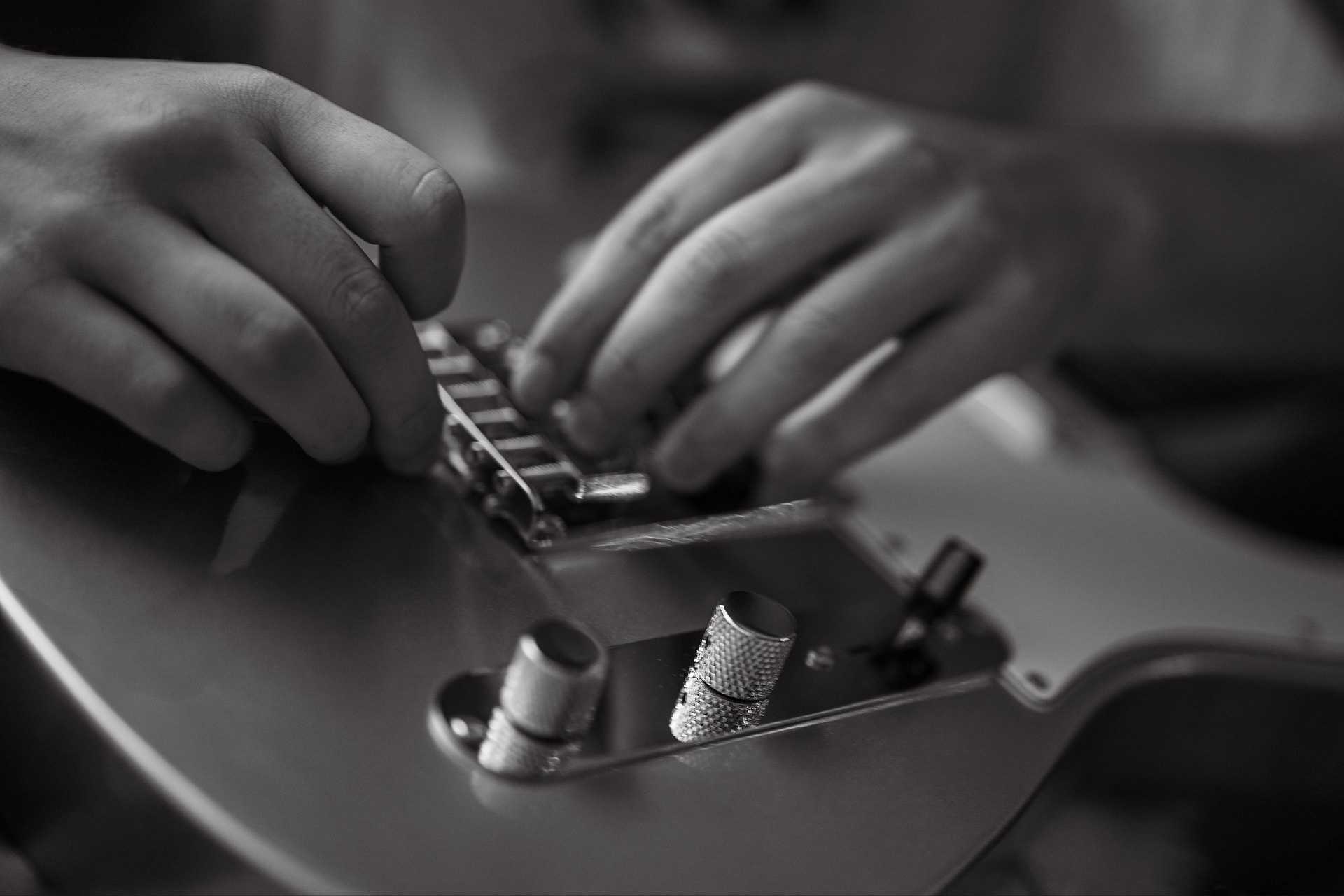As a guitar player, you know that proper maintenance and setup are vital for keeping your instrument in top shape and ensuring it delivers the best sound possible. I’ve been building and repairing electric guitars for the better part of twenty years at this point. Rest assured, with a little knowledge and a handful of tools, you’ll be able to keep your guitar in peak condition without having to take it to the repair man. In this comprehensive guide, I’ll take you through essential steps for guitar maintenance, string changing, truss rod adjustments, and basic setup. By following these tips, you can keep your guitar in optimal playing condition and enjoy years of musical bliss.
Cleaning and General Maintenance
Keeping your guitar clean and well-maintained not only enhances its appearance but also prolongs its lifespan. Here are some tips for effective guitar cleaning:
After each playing session, take a soft, lint-free cloth and wipe down the guitar body, neck, and strings to remove sweat, dirt, and oils.
Avoid using household cleaners or solvents, as they can damage the finish. Instead, invest in guitar-specific cleaning products.
Inspect the tuning machines and bridge for any loose screws or parts. If you find any, gently tighten them to ensure stability.
Remember to store your guitar in a suitable case or stand to protect it from physical damage and changes in humidity.
Get in touch for lessons with Dave
String Changing
Regularly changing your guitar strings is essential for maintaining a fresh and vibrant tone. Here’s a step-by-step guide to help you with the process:
Start by loosening the tuning pegs to release the tension on the old strings. Remove them from the bridge and discard.
Before installing new strings, take the opportunity to clean the fretboard using a specialized fretboard cleaner or a small amount of lemon oil on a cloth. I like to use Forby’s Lemon Oil Treatment which can be found cheaply at any hardware store. Be careful not to use excessive oil.
Now, it’s time to install the new strings. Begin with the low E string and insert it into the bridge, pulling it through until it reaches the appropriate tuning peg.
Leave enough slack in the string before winding it around the tuning peg. I like to hold the string about four inches above the fretboard before winding to get the appropriate amount of slack. Ensure that the strings are properly seated in the nut slots and the bridge saddles.
Gradually tighten each string, tuning it up to pitch. To minimize tuning instability, gently stretch the strings, retuning until they hold their pitch.
Truss Rod Adjustment
The truss rod plays a crucial role in controlling the curvature of the guitar’s neck. If you notice excessive bowing or backbow, it may be time for a truss rod adjustment. For me in SE Wisconsin, this is required maintenance in the spring and fall when temperatures and humidity change. Here’s what you need to know:
Locate the truss rod adjustment nut, typically found at the headstock end of the neck. It’s often covered by a plastic or metal plate.

Using a suitable truss rod wrench or hex key, make small adjustments. Turning the nut clockwise increases neck bow caused by the tension of the strings, called “relief.” Turning it counterclockwise decreases relief, bringing the neck back.
Remember to make quarter-turn adjustments at a time and allow the neck to settle for a few hours before assessing the results. Repeat the process as necessary, being careful not to over-adjust.
Basic Setup
A proper setup ensures optimal playability and performance. Here are some key aspects to consider:
Action: Adjust the bridge or saddle height to achieve your desired string action. Higher action can offer more sustain, but it may be harder to play. Lower action may provide easier playability but could lead to fret buzz.
Intonation: Use a tuner to check if your guitar is in tune across the fretboard. If certain notes are consistently sharp or flat, adjust the saddle position to correct the intonation.
Pickup Height: Set the pickup height to balance the output of each string. Follow the manufacturer’s guidelines or experiment by ear to find the sweet spot for your desired tone.
Nut: Ensure the nut slots are properly filed to prevent binding or excessive string height at the first fret. If necessary, consult a professional for nut adjustments.
There you go. By following the steps outlined here, you should be able get the most out of your guitar, and avoid most trips to your local tech. Happy Playing!
